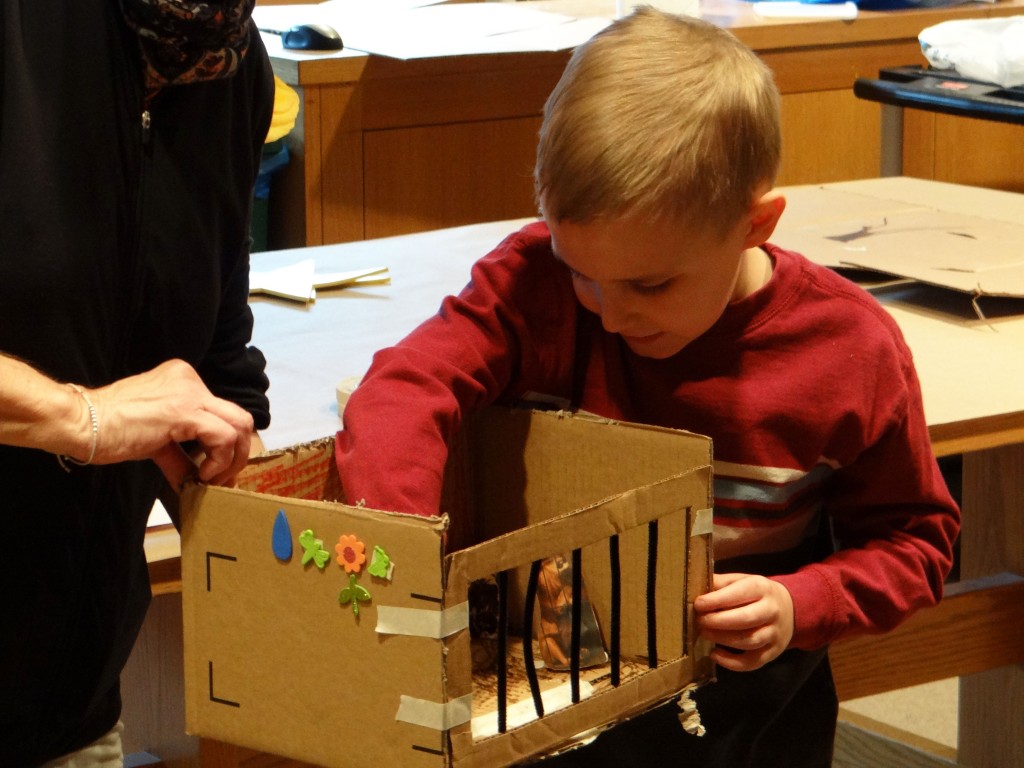Animal Expressions
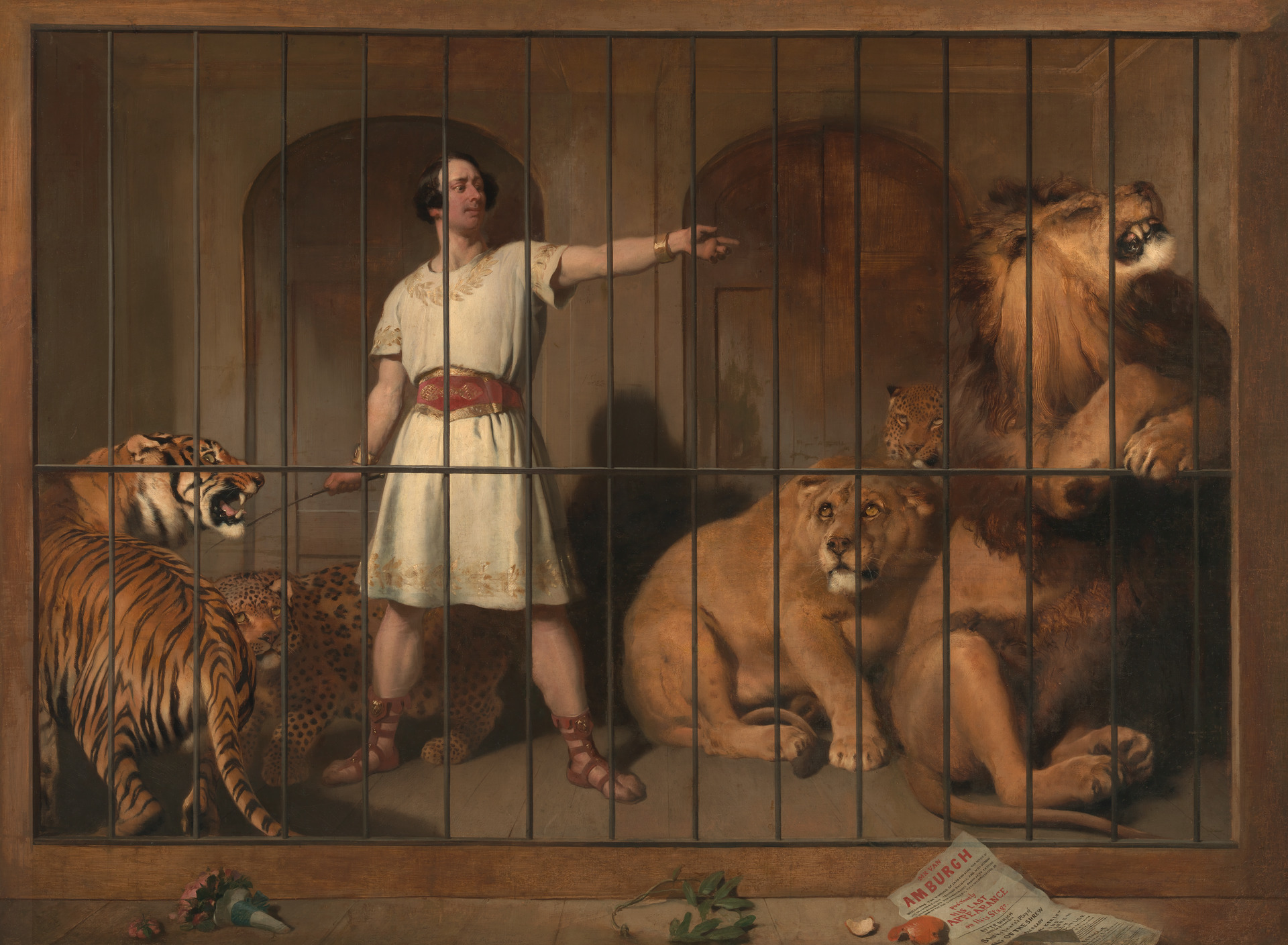
Last week during our Exploring Artism program, we took a look at the Portrait of Mr. Van Amburgh, As He Appeared with His Animals in the London Theatres and discussed animal expressions.
We began our session by going over our social story, and then introduced the painting through a warm-up worksheet. You can find the warm-up worksheet here. Participants were asked: Have you ever seen these animals before? Where did you see them? How do you express emotions? Can animals express emotions? What are the animals in this painting saying or feeling? What about the animals makes you think that? Participants and their families were then able to look at the warm-up sheet and fill in the speech bubbles with what each animal is saying. Participants were then able to share with the whole group what they thought each animal was saying. Next, we moved into the galleries to look at the painting and continue thinking about animal expressions.
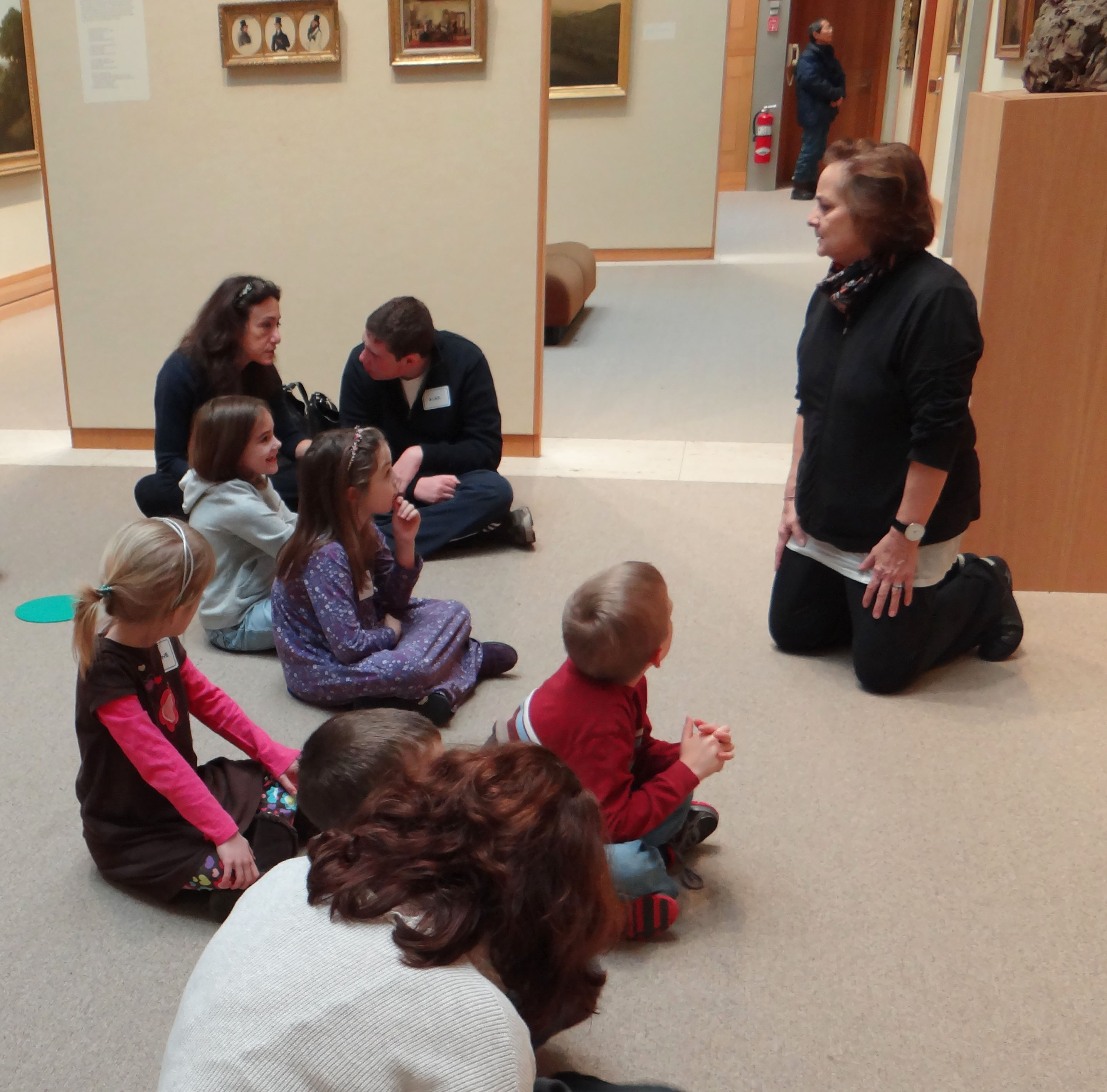
Sitting on our seating dots in front of the painting, our group began to discuss what is happening in the painting. Some questions that we asked in the galleries were: How are these animals standing in the cage? Do they seem happy? Sad? What makes you think this? What kinds of sounds do you hear when you look at this painting? Can you try to imitate the way these animals are feeling? After we had discussed all of these things, participants were then asked to act out the painting.
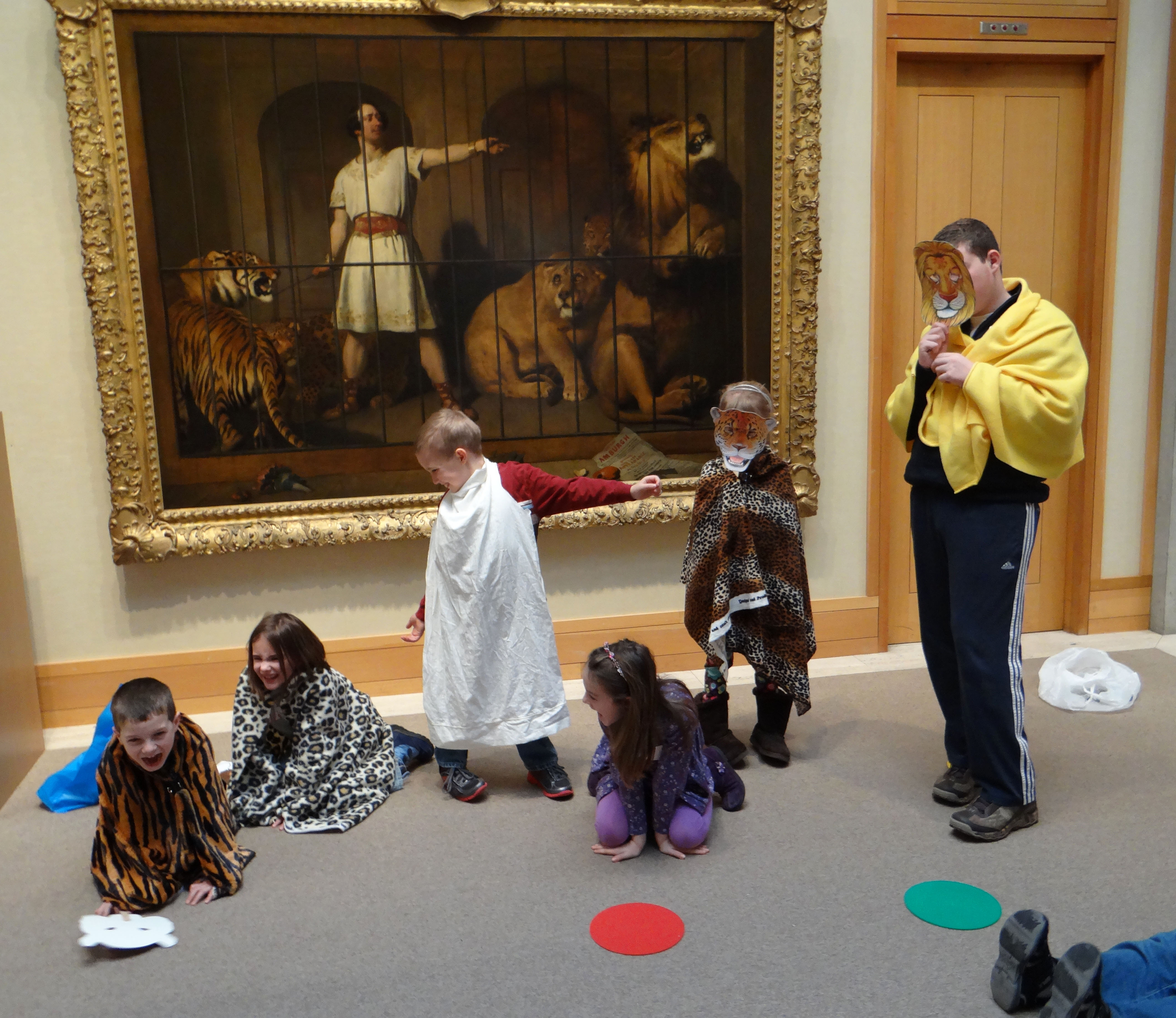
Using different animal fabrics, animal masks, and an iPad with animal sounds, each participant was given a role in the interactive activity. Once everyone was in costume, participants were asked to recreate the painting by standing or crouching like the animal they were portraying. One of our participants was not feeling up to acting out the scene, so he was given the iPad and allowed to create the sounds of the scene. Zoo Sounds Free is the free app that we used to create the sounds; you can find it here.
Having finished acting out the scene, participants and volunteers headed back down to the Docent Room to create dioramas of the scene using cardboard and Model Magic. We used cardboard boxes to make our dioramas, but shoes boxes also work well. Prepared beforehand, the Education Department created the “cage” using cardboard and pipe cleaners. First, participants were asked to decorate the background using markers, colored paper, and pre-cut foam pieces. Then, each participant was able to make animals using the Model Magic and markers. The Education Department had pre-cut several pictures of the animals from the painting to stick into the scene if participants were not inclined to make an animal using the clay. Each participant was given a small cutout of Mr. Van Amburgh to place in their dioramas as well. Lastly, volunteers and participants worked together to place the pipe cleaner cage onto the diorama.
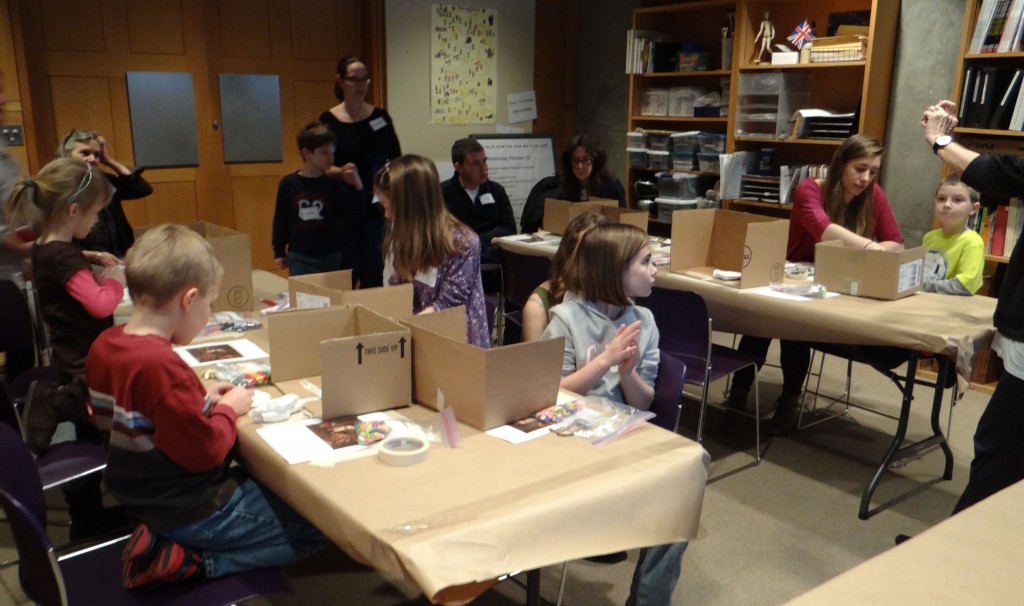

Each participant was then able to share their artwork with the rest of the group.
